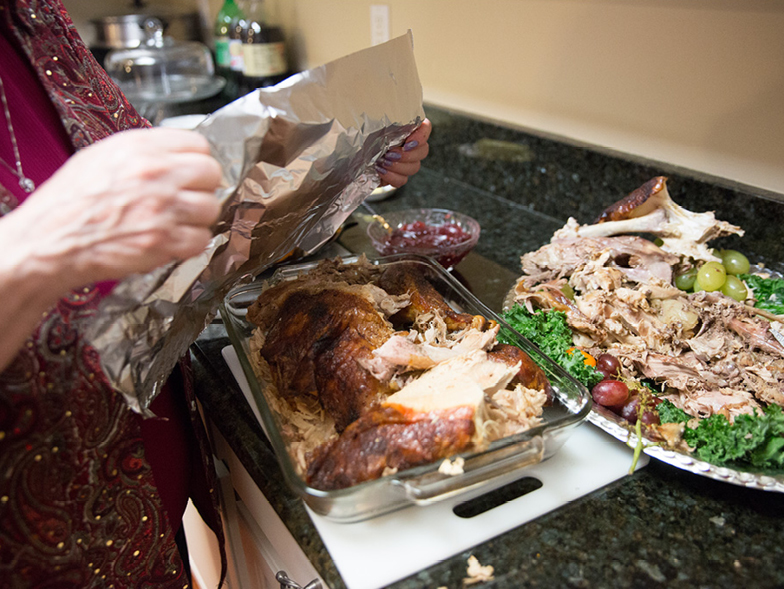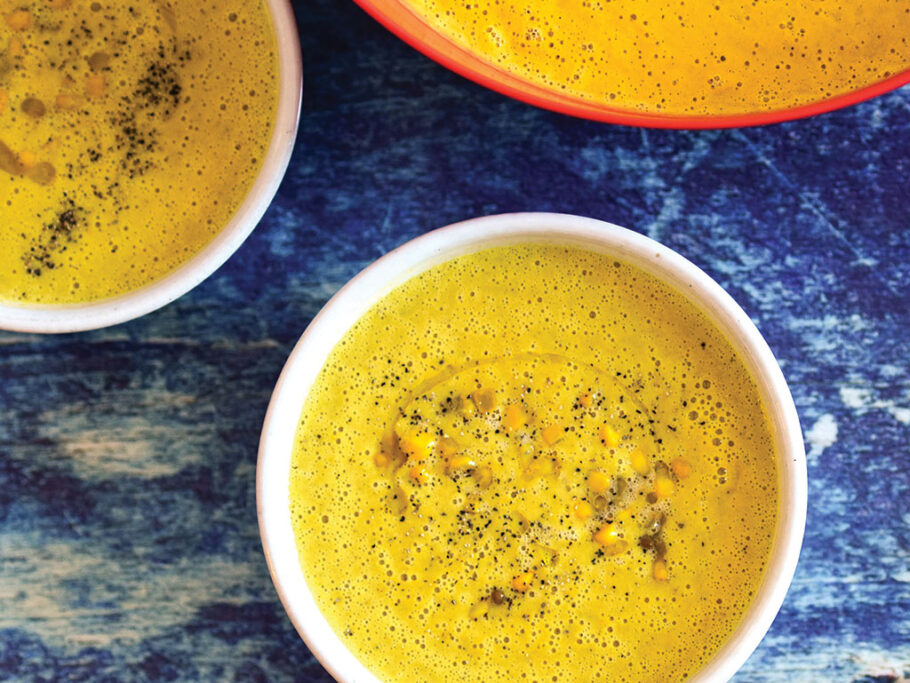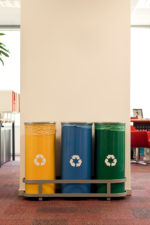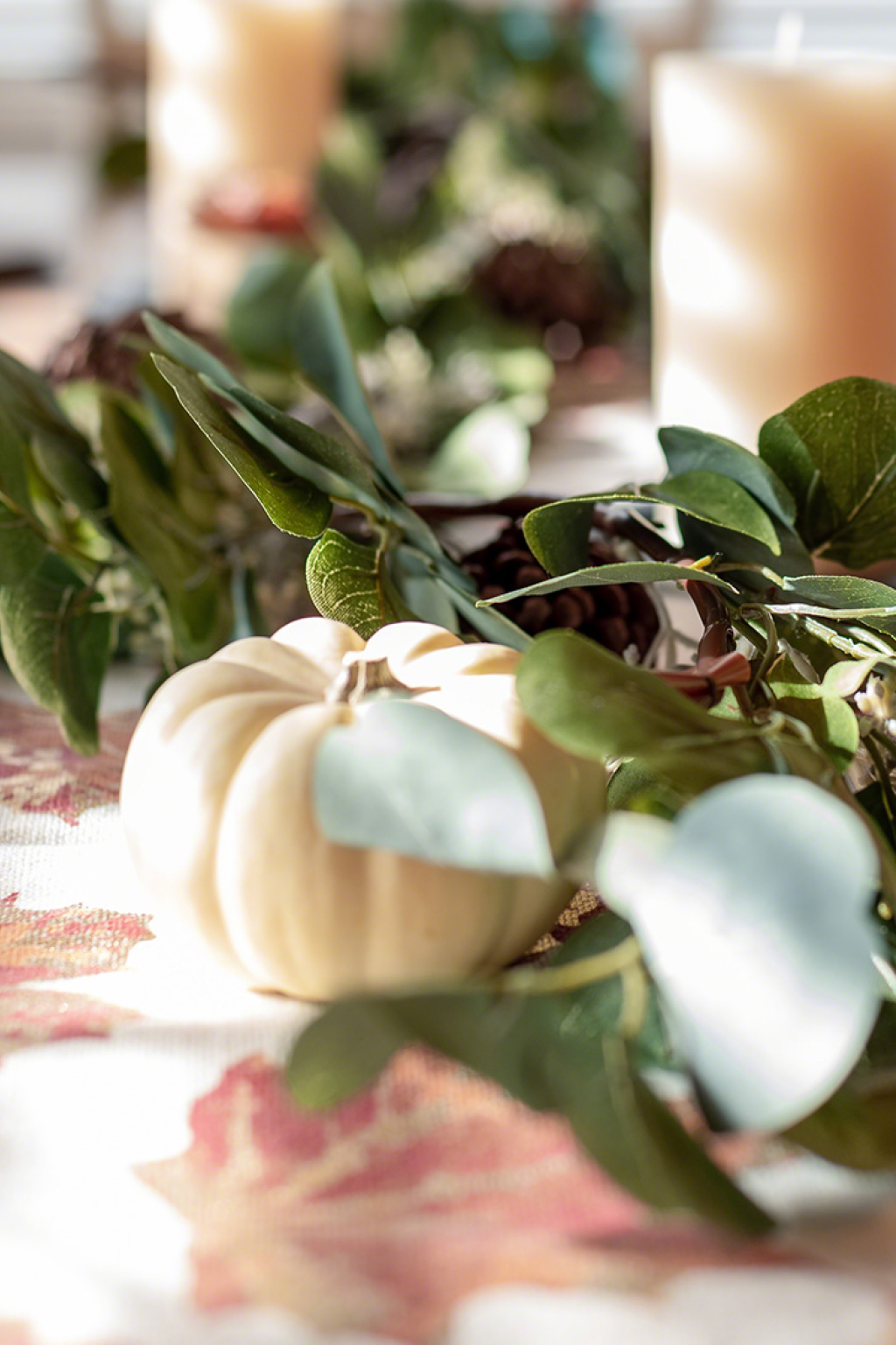Hosting an Environmentally Friendly Thanksgiving
Thanksgiving is all about having family get-togethers, savoring culinary favorites, and kicking off the holiday season. And because it is the season of giving, it’s also an opportune time to give back to Mother Nature by reducing your carbon footprint and creating an environmentally friendly Thanksgiving.

Shop locally
You can begin creating an eco-friendly holiday by visiting your local farmers market or signing up for a community-supported agriculture (CSA) program, through which you can buy seasonal and locally sourced produce directly from farmers. When shopping locally, you not only consume fresher, more flavorful fruits, vegetables, meats, eggs, and dairy products but also contribute to the reduction of carbon emissions because fewer trucks need to travel long distances for food delivery.
Consume plant-based foods
Meat products are known to release greenhouse gasses and have a larger carbon footprint per calorie than grains or vegetables. Adding some plant-based side dishes to your Thanksgiving Day menu is a way you can help support this effort to reduce dangerous emissions. For example, when assembling your stuffing, use vegetable stock rather than chicken stock; trade out the sausage for an all-veggie stuffing consisting of carrots, celery, mushrooms, onions, and chestnuts; substitute olive oil for butter; and use nondairy milk for your mashed potatoes.

Control food waste
The holidays are often a time of excess, especially with food. As a result, an estimated five million pounds of food is wasted annually between Thanksgiving and New Year’s Day in the United States. However, you can help limit food waste by carefully planning how much food you prepare. If you’re not sure how to determine this, websites like Save the Food can help you gauge the appropriate amount. If you do have leftovers, create a new recipe with them, freeze them for future consumption, or send some home with your guests in biodegradable food containers.
Use less paper and plastic
Be conscientious about the number of paper towels you use, and consider substituting them for cloth dish towels that can be washed and reused. Set your table with cloth napkins instead of paper ones; limit the use of disposable plastics such as plates, glasses, cutlery, and other serving dishes; store leftovers in reusable glass or plastic food containers rather than plastic bags; and use foil when wrapping food instead of plastic wrap since it may be recyclable if it’s clean. Finally, when purchasing beverages for your Thanksgiving dinner, such as soda, seltzer, iced tea, and the like, opt for recyclable aluminum cans or glass bottles.

Reduce water and energy consumption
The most resourceful way of doing your dishes is to put them in the dishwasher (if you have one) rather than filling your sink up with water. You can also conserve energy by cooking and baking in glassware or ceramic ware—both are energy-efficient and retain heat better than metal cookware, so the oven doesn’t need to stay on as long.
Make recycling easy
Simplify the recycling process for your guests by clearly labeling the trash and recycling bins and keeping them separated from each other to prevent confusion. Also, periodically check each bin to ensure that cans and bottles are ending up in the right place.

Decorate wisely
Be resourceful by decorating with recycled materials, if possible. Make festive centerpieces with seasonal items such as gourds, colorful dried flowers, and berries, and, depending on where you live, twigs, leaves, and acorns. Also consider using LED lights, renting chairs and tables instead of purchasing new ones, and using linen tablecloths instead of disposables.
Send digital invitations
It’s fun to send paper invitations for a holiday dinner party or a family reunion, but you can reduce paper waste by using a digital invite, which can be just as festive and creative as a paper version. Websites like evite.com, greenvelope.com, and paperlesspost.com offer great design templates, some of which are even free to use.
Give green hostess gifts
If you plan on giving a hostess gift, think about giving something that is ethically sourced, such as a 100 percent natural wood cutting board, undyed natural cotton napkins, or fair-trade picture frames made from sustainable wood. You can even make your own gift by giving a basket with home-baked goods and your favorite recipe cards finished off with a nice bouquet of flowers.
Use eco-friendly gift wrap
Be creative and environmentally savvy when wrapping your hostess gifts—and continue this new tradition throughout the holiday season. For example, instead of using nonrecyclable shiny wrapping paper and ribbons, cover your gifts with colorful shopping bags, old maps, recyclable paper, cloth ribbons, or other attractive fabrics. You can also reuse ribbons and bows from past gifts you have received. According to Stanford University, if every American family opted to wrap three gifts in reusable materials, the amount of saved paper would cover the equivalent of 45,000 football fields.
Whether you are hosting a Thanksgiving Day meal or are a contributing guest, there are plenty of ways to easily reduce your impact on the environment this season. No matter what small changes you make to your traditions, they’re worth it.































